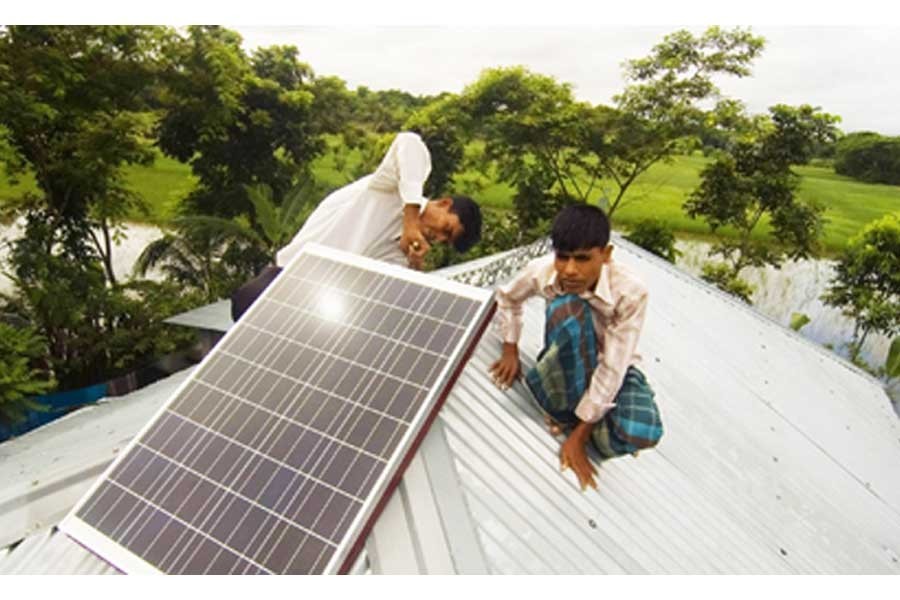The net benefit the country has received from the Solar Home System (SHS) is about US$1.7 billion, the World Bank (WB) has estimated. The SHS that started as a pilot scheme in 2003 with help from the WB in the country's remote areas is now the world's largest off-grid solar power programme. It has created a few beneficiaries over the years. Notable among them are 4.0 million rural households, who would not have electricity otherwise, and who have gained much from it. The net financial benefit accrued by these households using the SHS is worth US$1.35 billion.
The monetary gain means a lot to these poor households who live in remote char areas where grid electricity supply is not available. But what has been more important is the change the electricity has brought about in the lifestyle of these people, numbering about 20 million. Soon after dusk, life in these remote areas used to come to a halt; the people lit their kerosene lamps, took their scanty food in a hurry and went to bed to save fuel, an expensive item for them.
The scenario has changed now, as many families in char lands are using SHS. They work even after dusk and their children study as most homes have electric bulbs, fans and, sometimes, refrigerators. The shops remain open for some evening hours. However, not all families can afford the SHS. Its price remains a problem.
A major source of renewable energy, solar power has transformed the landscape of remote char lands, but its contribution to the total power generation at the national level is still tiny - only 3.0 per cent. The official target is to achieve 10 per cent by the year 2021, meaning generation of 2400 megawatt. The way things have been progressing in renewable energy production, the target remains as elusive as ever.
The government has so far approved proposals for setting up several on-grid solar power plants by private companies. Recently, a plant with 100 MW generation capacity has joined the grid. Some big business houses have taken an active interest in setting up such plants. This is a positive development given the country's high dependence on fossil fuels for power generation. Imported fossil fuels help generate one-third of power, and natural gas produced locally is used for the generation of the rest. But the country's gas reserves are depleting fast, and those would run dry soon.
For cutting enormous cost on imported fossil fuels and de-carbonise its environment, the country needs to rely more on renewable energy sources for power generation. But it is easier said than done. The scarcity of land remains to be the number one problem for solar power generation in Bangladesh. Using agricultural land for setting up solar power plants - a 100MW solar power plant needs at least 300 acres of land - is not permitted. Another problem is sunshine time, which is shorter compared to many other countries', including neighbouring India's.
However, the government might explore the possibility of using water bodies such as ponds, haors, beels and relatively tranquil rivers for setting up floating solar power plants. But, before taking such a decision, the policymakers will need to discuss the issues with experts in the relevant fields, including those engaged in the fishery sub-sector.


